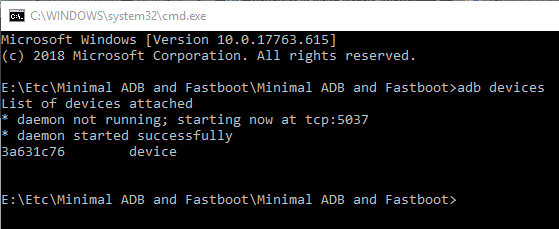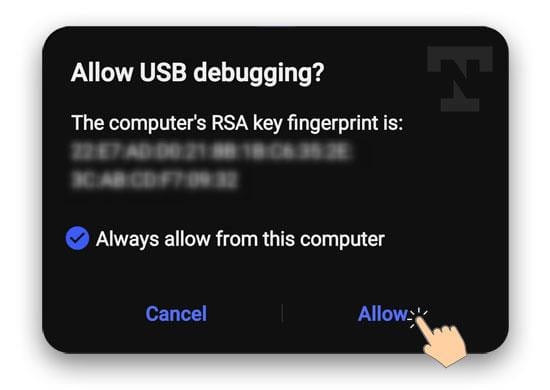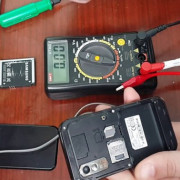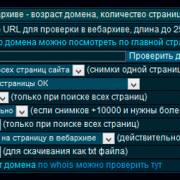Download android sdk platform-tools (windows/mac/linux)
Содержание:
- «А что, так можно было?!» — Универсальность
- How to setup ADB on Linux
- Linux
- How to Setup ADB
- Step 3. Installing the ADT Plugin for Eclipse
- Установка ADB и Fastboot из пакета Android SDK
- Step 2. Downloading the SDK Starter Package
- Mac
- Adding New Sites
- Most Commonly Used ADB Commands:
- How to use Android SDK Platform Tools?
- How to Download the SDK platform tools?
- Android 2.3.3
- How to Use SDK Platform-Tools
- Как установить связку ADB + Fastboot на компьютер
- Android SDK – инструкция по использованию
- Особенности платформы
- Download The Latest Version
«А что, так можно было?!» — Универсальность
Предоставьте клиенту различные интерфейсы для работы с вашей библиотекой. Приведу пример:
Если предоставить только синхронную версию, то при реализации асинхронного приложения клиент вынужден будет делать асинхронные обертки вашего синхронного метода. Если предоставить только асинхронную версию — ситуация похожа. Дайте клиенту и то и другое и он скажет вам спасибо.
Приятным плюсом будут дженерики. Например, у нас есть класс для работы с конфигурациями, реализующий методы упаковки конфига в строку, загрузки конфига из файла и т.д. Конфигурация конкретного модуля будет наследоваться от нашего базового класса, но для работы с новым классом нам необходимо также предоставить методы распаковки.
Таким образом мы предоставили клиенту аж три реализации, которые он может использовать. Дженерики очень удобны, но при работе с динамическими типами их можно вызывать только через рефлексию, что накладно. Общий принцип универсальности, надеюсь, понятен.
How to setup ADB on Linux
- Download the Android SDK Platform Tools ZIP file for Linux.
- Extract the ZIP to an easily-accessible location (like the Desktop for example).
- Open a Terminal window.
- Enter the following command:
- This will change the directory to where you extracted the ADB files.
- So for example:
- Connect your device to your Linux machine with your USB cable. Change the connection mode to “file transfer (MTP)” mode. This is not always necessary for every device, but it’s recommended so you don’t run into any issues.
- Once the Terminal is in the same folder your ADB tools are in, you can execute the following command to launch the ADB daemon:
- Back on your smartphone or tablet device, you’ll see a prompt asking you to allow USB debugging. Go ahead and grant it.
- Finally, re-enter the command from step #8. If everything was successful, you should now see your device’s serial number in the Terminal window output.
Congrats! You can now run any ADB command on your device! Now go forth and start modding your phone by following our extensive list of tutorials!
Some Linux users should be aware that there can be an easier way to install ADB on their computer. The guide above will certainly work for you, but those own a Debian or Fedora/SUSE-based distro of Linux can skip steps 1 and 2 of the guide above and use one of the following commands:
- Debian-based Linux users can type the following command to install ADB:
- Fedora/SUSE-based Linux users can type the following command to install ADB:
However, it is always better to opt for the latest binary from the Android SDK Platform Tools release, since the distro-specific packages often contain outdated builds.
Just to cover all of our bases here, users may need to put a ./ in front of the ADB commands we list in future tutorials, especially when they are using the extracted binaries directly from the Platform Tools ZIP. This is something that is likely known by any *nix user (or Windows user running PowerShell) already, but again, we want as many people as possible to understand how to do these tweaks for Android no matter how much of your operating system you know.
Linux
- https://github.com/righ/android-platform-tools-zips/raw/master/linux/platform-tools_r03.zip
- https://github.com/righ/android-platform-tools-zips/raw/master/linux/platform-tools_r04.zip
- https://github.com/righ/android-platform-tools-zips/raw/master/linux/platform-tools_r05.zip
- https://github.com/righ/android-platform-tools-zips/raw/master/linux/platform-tools_r06.zip
- https://github.com/righ/android-platform-tools-zips/raw/master/linux/platform-tools_r07.zip
- https://github.com/righ/android-platform-tools-zips/raw/master/linux/platform-tools_r08.zip
- https://github.com/righ/android-platform-tools-zips/raw/master/linux/platform-tools_r09.zip
- https://github.com/righ/android-platform-tools-zips/raw/master/linux/platform-tools_r10.zip
- https://github.com/righ/android-platform-tools-zips/raw/master/linux/platform-tools_r11.zip
- https://github.com/righ/android-platform-tools-zips/raw/master/linux/platform-tools_r12.zip
- https://github.com/righ/android-platform-tools-zips/raw/master/linux/platform-tools_r13.zip
- https://github.com/righ/android-platform-tools-zips/raw/master/linux/platform-tools_r14.zip
- https://github.com/righ/android-platform-tools-zips/raw/master/linux/platform-tools_r15.zip
- https://github.com/righ/android-platform-tools-zips/raw/master/linux/platform-tools_r16.zip
- https://github.com/righ/android-platform-tools-zips/raw/master/linux/platform-tools_r17.zip
- https://github.com/righ/android-platform-tools-zips/raw/master/linux/platform-tools_r18.zip
- https://github.com/righ/android-platform-tools-zips/raw/master/linux/platform-tools_r19.zip
- https://github.com/righ/android-platform-tools-zips/raw/master/linux/platform-tools_r20.zip
- https://github.com/righ/android-platform-tools-zips/raw/master/linux/platform-tools_r21.zip
- https://github.com/righ/android-platform-tools-zips/raw/master/linux/platform-tools_r22.zip
- https://github.com/righ/android-platform-tools-zips/raw/master/linux/platform-tools_r23.zip
- https://github.com/righ/android-platform-tools-zips/raw/master/linux/platform-tools_r24.zip
- https://github.com/righ/android-platform-tools-zips/raw/master/linux/platform-tools_r25.zip
How to Setup ADB
Note: Setting up ADB on the computer is just half the equation since you’ll also need to do some things on the smartphone or tablet to accept the ADB commands.
Phone Setup
- Launch the Settings application on your phone.
- Tap the About Phone option generally near the bottom of the list.
- Then tap the Build Number option 7 times to enable Developer Mode. You will see a toast message when it is done.
- Now go back to the main Settings screen and you should see a new Developer Options menu you can access.
- Go in there and enable the USB Debugging mode option.
- You are partially done with the phone setup process. Next up, you will need to scroll below and follow the rest of the instructions for your particular operating system.
Follow along for the operating system on your computer.
Step 3. Installing the ADT Plugin for Eclipse
Android offers a custom plugin for the Eclipse IDE, called Android
Development Tools (ADT), that is designed to give you a powerful, integrated
environment in which to build Android applications. It extends the capabilites
of Eclipse to let you quickly set up new Android projects, create an application
UI, debug your applications
using the Android SDK tools, and even export signed (or unsigned) APKs in order
to distribute your application. In general, developing in Eclipse with ADT is a
highly recommended approach and is the fastest way to get started with Android.
If you’d like to use ADT for developing Android applications, install it now.
Read for
step-by-step installation instructions, then return here to continue the
last step in setting up your Android SDK.
If you prefer to work in a different IDE, you do not need to
install Eclipse or ADT, instead, you can directly use the SDK tools to build and
debug your application. The Overview
section of the developer guide outlines the major steps that you need to complete
when developing in Eclipse or other IDEs.
Установка ADB и Fastboot из пакета Android SDK
Этот способ предусматривает использование официального средства разработки и тестирования приложений Android Studio. Переходим на страницу https://developer.android.com/studio/index.html и находим заголовок «Get just the command line tools». Ниже скачиваем архив SDK tools для Windows (перед загрузкой соглашаемся с условиями использования).
Распаковываем архив на диск С. В нашем случае файлы были извлечены в папку sdk-tools-windows-3859397.
Заходим в директорию, а потом переходим в каталог tools/bin. Здесь нас интересует файл sdkmanager, который и поможет установить ADB и Fastboot на компьютер.
Далее все действия будут производиться в командной строке Windows. Запускаем ее от имени администратора.
Теперь необходимо открыть папку с sdkmanager, для чего в консоли следует выполнить команду cd C:\sdk-tools-windows-3859397\tools\bin, где C:\sdk-tools-windows-3859397\tools\bin – путь к файлу sdkmanager.
Если вы распаковали Android SDK не на диск С, а в какое-то иное место, то полный адрес можно будет узнать с помощью верхней строки Проводника (кликаем по конечной папке правой кнопкой мыши и жмем «Копировать адрес»).
Итак, мы перешли в tools\bin и теперь нам нужно выполнить команду sdkmanager «platform-tools», которая установит пакет Platform-tools, содержащий файлы ADB и Fastboot.
В ходе установки ознакомьтесь с лицензионным соглашением и нажмите Y для завершения операции.
Если все прошло как надо, в корневой папке Android SDK появится каталог platform-tools с необходимыми файлами adb.exe и fastboot.exe.
Step 2. Downloading the SDK Starter Package
The SDK starter package is not a full
development environment—it includes only the core SDK Tools, which you can
use to download the rest of the SDK components (such as the latest Android platform).
If you haven’t already, get the latest version of the SDK starter package from the SDK download page.
If you downloaded a or package (instead of the SDK installer), unpack
it to a safe location on your machine. By default, the SDK files are unpacked
into a directory named .
If you downloaded the Windows installer ( file), run it now and it will check
whether the proper Java SE Development Kit (JDK) is installed (installing it, if necessary), then
install the SDK Tools into a default location (which you can modify).
Make a note of the name and location of the SDK directory on your system—you will need to
refer to the SDK directory later, when setting up the ADT plugin and when using
the SDK tools from command line.
Mac
- https://github.com/righ/android-platform-tools-zips/raw/master/macosx/platform-tools_r03.zip
- https://github.com/righ/android-platform-tools-zips/raw/master/macosx/platform-tools_r04.zip
- https://github.com/righ/android-platform-tools-zips/raw/master/macosx/platform-tools_r05.zip
- https://github.com/righ/android-platform-tools-zips/raw/master/macosx/platform-tools_r06.zip
- https://github.com/righ/android-platform-tools-zips/raw/master/macosx/platform-tools_r07.zip
- https://github.com/righ/android-platform-tools-zips/raw/master/macosx/platform-tools_r08.zip
- https://github.com/righ/android-platform-tools-zips/raw/master/macosx/platform-tools_r09.zip
- https://github.com/righ/android-platform-tools-zips/raw/master/macosx/platform-tools_r10.zip
- https://github.com/righ/android-platform-tools-zips/raw/master/macosx/platform-tools_r11.zip
- https://github.com/righ/android-platform-tools-zips/raw/master/macosx/platform-tools_r12.zip
- https://github.com/righ/android-platform-tools-zips/raw/master/macosx/platform-tools_r13.zip
- https://github.com/righ/android-platform-tools-zips/raw/master/macosx/platform-tools_r14.zip
- https://github.com/righ/android-platform-tools-zips/raw/master/macosx/platform-tools_r15.zip
- https://github.com/righ/android-platform-tools-zips/raw/master/macosx/platform-tools_r16.zip
- https://github.com/righ/android-platform-tools-zips/raw/master/macosx/platform-tools_r17.zip
- https://github.com/righ/android-platform-tools-zips/raw/master/macosx/platform-tools_r18.zip
- https://github.com/righ/android-platform-tools-zips/raw/master/macosx/platform-tools_r19.zip
- https://github.com/righ/android-platform-tools-zips/raw/master/macosx/platform-tools_r20.zip
- https://github.com/righ/android-platform-tools-zips/raw/master/macosx/platform-tools_r21.zip
- https://github.com/righ/android-platform-tools-zips/raw/master/macosx/platform-tools_r22.zip
- https://github.com/righ/android-platform-tools-zips/raw/master/macosx/platform-tools_r23.zip
- https://github.com/righ/android-platform-tools-zips/raw/master/macosx/platform-tools_r24.zip
- https://github.com/righ/android-platform-tools-zips/raw/master/macosx/platform-tools_r25.zip
Adding New Sites
By default, Available Packages displays packages available from the
Android Repository and Third party Add-ons. You can add other sites that host
their own Android SDK add-ons, then download the SDK add-ons
from those sites.
For example, a mobile carrier or device manufacturer might offer additional
API libraries that are supported by their own Android-powered devices. In order
to develop using their libraries, you must install their Android SDK add-on, if it’s not already
available under Third party Add-ons.
If a carrier or device manufacturer has hosted an SDK add-on repository file
on their web site, follow these steps to add their site to the Android SDK
Manager:
- Select Available Packages in the left panel.
- Click Add Add-on Site and enter the URL of the
file. Click OK.
Any SDK packages available from the site will now be listed under a new item named
User Add-ons.
Most Commonly Used ADB Commands:
For the first half of the guide on “Most Important ADB and Fastboot Commands”, we will be focusing on various ADB codes.
Check ADB Connection
To check whether the device is properly connected and is in ADB, enter the below code. Until you get an alphanumeric code with the word ‘device’ next to it (see screenshot below), you cannot carry out any further operations. Also, make that device is not recognized as ‘unauthorized’. Don’t Miss: Fix Waiting for Device Error in ADB Devices

ADB Shell Command
To interact with your device’s operating system, enter the below codes. Whereas there are tons of adb shell commands, you could find the most important ones in this guide.
ADB Sideload
Using this command, you could flash (install) zip files directly from the command shell, if your recovery supports it (good news- TWRP does support). Boot your device to ‘TWRP recovery’ > Go to ‘Advanced’ > ‘Sideload’ > ‘Swipe to start sideload’. Now enter the below code: Read this detailed guide: How to Use ADB Sideload in Android
Start ADB Server
When you need to start the ADB server, in case it does not automatically “kills the daemon” and “start on a specific port”, type the below command:
How to use Android SDK Platform Tools?
Navigate to the extracted folder using Command Prompt or Terminal. Use the following ADB and Fastboot commands as per your requirements.
Minimal ADB and Fastboot
If you are a regular user who uses adb and fastboot for simple usage like a flash, bootloader unlocks, you can use this software. It is a Windows version. All you have to do is download, extract, and install the executable file.
Download the ADB drivers.
Installation Steps
Download and extract the files. Select the adb setup file and run this as Administrator.
The installation window will open press “Y” twice to install adb system-wide.
Now you can find the adb files in your installed folder. You can access the command anywhere within your PC. But, it is better to copy the flash and boot files in this folder for the process.
How to use ADB
There are various things you can do with ADB; this tool supports a lot of commands to trigger most functions. Most of them deal with the recovery mode. I try to cover some essential commands.
Note: you must activate “Developer Options” on the device and turn on “USB Debugging” on the Android device before running ADB commands.
ADB commands
|
ADB Command |
Function |
|
adb reboot – bootloader |
Reboots Android device in bootloader mode |
|
adb reboot |
Reboots Android phone in normal mode |
|
adb push |
Move a file from local system to an Android phone’s location |
|
adb devices |
Displays all connected ADB compatible devices |
|
adb pull |
Moves a file from Android to your PC |
|
adb install |
Installs an app from your system’s .apk file location to your Android device |
|
adb connect |
Use ADB commands over Wi-Fi Network |
|
adb backup |
Backs up the Android device |
|
adb shell screencap |
Captures a screenshot of the device |
|
adb sideload file |
Push the file to your mobile device and Install it. |
Launching ADB requires you know about CMD – Command Prompt. This is because you need to start CMD and use commands to access the folder where you extracted the Platform Tools and launch adb.exe.
How to use Fastboot
Fastboot installs alongside ADB when you extract the ZIP file. Fastboot allows you to run commands on and Android device that is in bootloader mode. There are, however, other ways to use an Android device in bootloader mode, but using Fastboot is the best option. Also, it is possible to unlock an Android device bootloader using Fastboot to install a custom system file.
However, before Fastboot commands can work on an Android device, you must activate “Developer Options” on the device and turn on “USB Debugging.”
Fastboot commands
|
Fastboot Commands |
Functions |
|
fastboot oem lock |
re-locks the bootloader of an unlocked device |
|
fastboot devices |
Shows the serial number of a connected Android device |
|
fastboot flash recovery (filename) |
Flash the file from PC |
|
fastboot boot recovery (filename) |
Boot the data from PC |
|
fastboot oem unlock |
Unlock the bootloader of connected Android device |
How to Download the SDK platform tools?
You will be able to download the ADB and Fastboot which are the Android SDK tools from Google officially, or you can check the direct download links below. Many of the users of Android have utilized ADB and fastboot and some other kits in their Android mobiles.
If you want to Flash or Unlock the bootloader of your Android device, these Android SDK tools come into the play. Usually to install the ADB or the fastboot you can download the Android SDK which can be found on the Android studio. This you can set up in your pc. For that, you have to download the whole tool kit which will in size 1GB.
At the moment there is a Minimal ADB and Fastboot tools made by the developers. However, It is for most of the time the best option to download them from a trustworthy source. The updated ADB and fastboot is downloadable in the windows, Mac and Linux. They can be found in the zip package which you can download and take it from the computer easily. The size is about 10MB. The smallest of the command lines can be measured as 200MB in size. You do not require all of it if you want to do the ADB and fastboot functions on your mobile.
You should not trust the third party ADB and fastboot files and toolkit because they may not be reliable. They can be malicious. When there are many new versions released, the old versions may become unsuitable for the phone you use. So always stick with the latest version of the Android SDK Platform toolkit.
Android 2.3.3
(July 2011)
- Dependencies:
-
Requires SDK Tools r12 or
higher. - Notes:
-
Improvements to the platform’s rendering library to support the visual layout editor in the ADT
Eclipse plugin. This revision allows for more drawing features in ADT and fixes several
bugs in the previous rendering library. It also unlocks several editor features that were added in
ADT 12.
(February 2011)
- Dependencies:
-
Requires SDK Tools r9 or higher.
Emulator Skins
The downloadable platform includes a set of emulator skins that you can use
for modeling your application in different screen sizes and resolutions. The
emulator skins are:
- QVGA (240×320, low density, small screen)
- WQVGA400 (240×400, low density, normal screen)
- WQVGA432 (240×432, low density, normal screen)
- HVGA (320×480, medium density, normal screen)
- WVGA800 (480×800, high density, normal screen)
- WVGA854 (480×854 high density, normal screen)
How to Use SDK Platform-Tools
Now that you have already downloaded the SDK Platform-tools, you need to install it or set it up on your computer. If you don’t know what to do with the zip file you just downloaded and how to execute the ADB and Fastboot commands, I am going to explain everything you need to know.
First of all, you need to unzip the “platform-tools-latest.zip“. You can extract it anywhere on your computer but I prefer saving the files to a folder created as “Android” on the C drive on my Windows PC. Having extracted the zip file, you need to launch a command prompt window before you can execute an ADB or Fastboot command.
How to Launch a Command Window?
It’s very easy to launch a command prompt window on a Windows PC. Click the Search icon next to the Windows menu icon on the taskbar and hit the Enter key. In case you need to launch the Command or CMD window from inside the Platform-tools folder, there are 2 ways to do that.
Method 1
- Open the folder in which you extracted the content of the Platform-tool.zip file.
- While pressing the Shift key on the keyboard, perform a right-click on your mouse at an empty place inside the folder window.
- From the context menu pop-up, select the “Open command prompt here” option.
- You can now execute any ADB or Fastboot command.
Method 2
Well, this method is far easier than the one I described above. You can simply launch a command window from inside the platform-tools folder by typing “cmd” in the Windows file explorer address bar as shown below and hitting the Enter key on your PC’s keyboard.

Note: Make sure to enable the USB debugging option on your Android device. You can find it under Settings> Developer options. In case you don’t see Developer Options listed under device Settings, open About device> Software Information and tap the Build number 7 times to unlock the hidden Developer options on your Android device.
You need to allow the debugging option so that your devices and computer can communicate and interact with each other. When you execute a command in the cmd window, you’ll get a pop-up on your Android’s screen asking you to Allow USB debugging.

Verify ADB Connection
Note: Make sure you have already installed the proper Android USB Driver from your device’s manufacturer on your computer.
- Having enabled USB Debugging from Developer options, connect your phone or tablet to the computer using a compatible USB cable.
- Now launch a command window and type the following command and click the Enter key on the keyboard.
adb devices
- You’ll see the list of the IDs of attached devices in the Command Prompt window represented by a string of alphanumeric values as shown below.
Please note that to sideload and APK on your Android phone via ADB or to flash a system image (.img) file using Fastboot commands, you need to place those files inside the “platform-tools” folder first. You can also enable system-wide ADB and fastboot so that you can execute commands without navigating to the “platform-tools” directory every time. If you encounter any problem while running commands, read my tutorial on fixing ADB or Fastboot is not recognized error.
That’s all for now! I’ve also prepared a very exhaustive list of useful ADB, ADB Shell, and Fastboot commands in a dedicated tutorial. Don’t forget to check that.
Now that you have set up SDK Platform tools on your computer, here are a few things that you should start with.
- Uninstall system apps on Android without root
- Turn Safe Mode On or Off using ADB command
- Turn off USB Debugging and Developer options using ADB command
Как установить связку ADB + Fastboot на компьютер
ADB, или Android Debug Bridge – это консольное приложение для ПК, с помощью которого можно управлять устройством на базе Android прямо с компьютера. Выглядит это так: сначала на компьютер устанавливаются инструментарий ADB и драйвера для Android, потом мобильное устройство подключается к ПК через USB-кабель в режиме отладки, и, наконец, после запуска ADB в консоли (командной строке) выполняются специальные команды, инициирующие те или действия с гаджетом. Подробная информация о принципе работы самого средства отладки представлена на официальном сайте разработчика, поэтому мы останавливаться на этом не будем, а сразу перейдем к возможностям ADB и способам его установки на компьютер.
Android SDK – инструкция по использованию
При точном следовании указаний по установке и отладке, любой пользователь, вне зависимости от его уровня знаний, сможет разобраться с этим паком драйверов и программных инструментов на Android Перед непосредственной установкой приложения необходимо провести ряд подготовительных процедур:
- Ознакомиться с системными требованиями Андроид СДК tools на сопоставимость с устройством
- Устанавливаем на ПК другой комплект разработчика — JDK (Java Development Kit)
- Еще несколько нужных инструментов – плагин ADT Eclipse и IDE
- После установки Eclipse программа СДК готова к запуску и работе
Пользователи, которые скачивают инструмент в ознакомительных целях, или для простых минимальных задач могут не выполнять последние пункты, направленные на такую расширенную работу СДК как программирование.
Особенности платформы
Android Studio подразумевает собой несколько сборок, считается полноценной альтернативой Эклипс и позволяет создавать приложения любой степени сложности. В нем есть инструменты, созданные для обозначения и упаковки кода, что упрощает задачу при работе с большими порциями программных компонентов.
Применяется система управления Gradle, которая делает процесс создания кодов гибким. Только создатель должен понимать архитектуру программ Андроид и знать языки Java и API.
Среди плюсов можно отметить:
- зрительный показ выполняемых действий,
- наличие шаблонов проектов,
- широкий набор инструментов,
- возможность применять готовые компоненты при разработке приложений.
Также можно в режиме онлайн видеть все изменения, выполняемые в проекте. Просматривать дизайн утилит можно на разных девайсах, с разными настройками системы и разрешением экрана.
Download The Latest Version
It is important to understand that newer device are usually shipped with a newer version of Android OS. Hence, it is very recommended to obtain the latest version of the Android Platform Tools available. This is to avoid error and issue caused by incompatible ADB or Fastboot tools. For instance, if you want to unlock the bootloader of Xiaomi Mi 8, Google Pixel 2, or Samsung Galaxy S9 with an old version of the Fastboot tool, it will not work flawlessly due to the incompatibility issue.
Each version of Android Studio inherits necessary tools of SDKs compatible with the specific version of Android OS (6.0 Marshmallow, 7.0 Nougat, 8.0 Oreo, 9.0 Pie, and so on). In that sense, Platform Tools v24 will not work with Android 9.0 Pie. However, the tools are backward compatible. It means that you need only one version of Platform-Tools to work with older versions of Android. Therefore, make sure you grab the latest version.
Latest Version
Use the download button below to automatically check the latest version. The link will be automatically generated and will fetch the latest package from the official Google’s cloud server.
Version latest | 1418 downloads
Alternatively, we also have the mirrored versions which are hosted on our own server in both US and EU. All the links are direct hot links with resume-able and multiple connections available.
version r28.0.0
Changelog:
adb:
- Sort output of adb devices by connection type and device serial.
- Increase the socket listen to backlog to allow for more simultaneous adb commands.
- Add support for checksum-less operation with devices running Android P, which improves throughput by up to 40%.
- Improve error output for adb connect.
fastboot:
- Clean up help output.
- Improve output format, add a verbose output mode (-v).
- Add product.img and odm.img to the list of partitions flashed by fastboot flashall.
- Avoid bricking new devices when using a too-old version of fastboot by allowing factory image packages to require support for specific partitions.
File name :platform-tools-r28.0.0-windows.zip
Version r28.0.0 | 630 downloads | Size: 5 MB
version r27.0.1
Changelog:
- adb: fixes an assertion failure on MacOS that occurred when connecting devices using USB 3.0.
- Fastboot: On Windows, adds support for wiping devices that use F2FS (Flash-Friendly File System).
File name :platform-tools_r27.0.1-windows.zip
Version r27.0.1 | 176 downloads | Size: 5 MB
version r27.0.0
Changelog:
Re-fixes the macOS 10.13 fastboot bug first fixed in 26.0.1, but re-introduced in 26.0.2.
File name :platform-tools-r27.0.0-windows.zip
Version r27.0.0 | 89 downloads | Size: 4 MB


